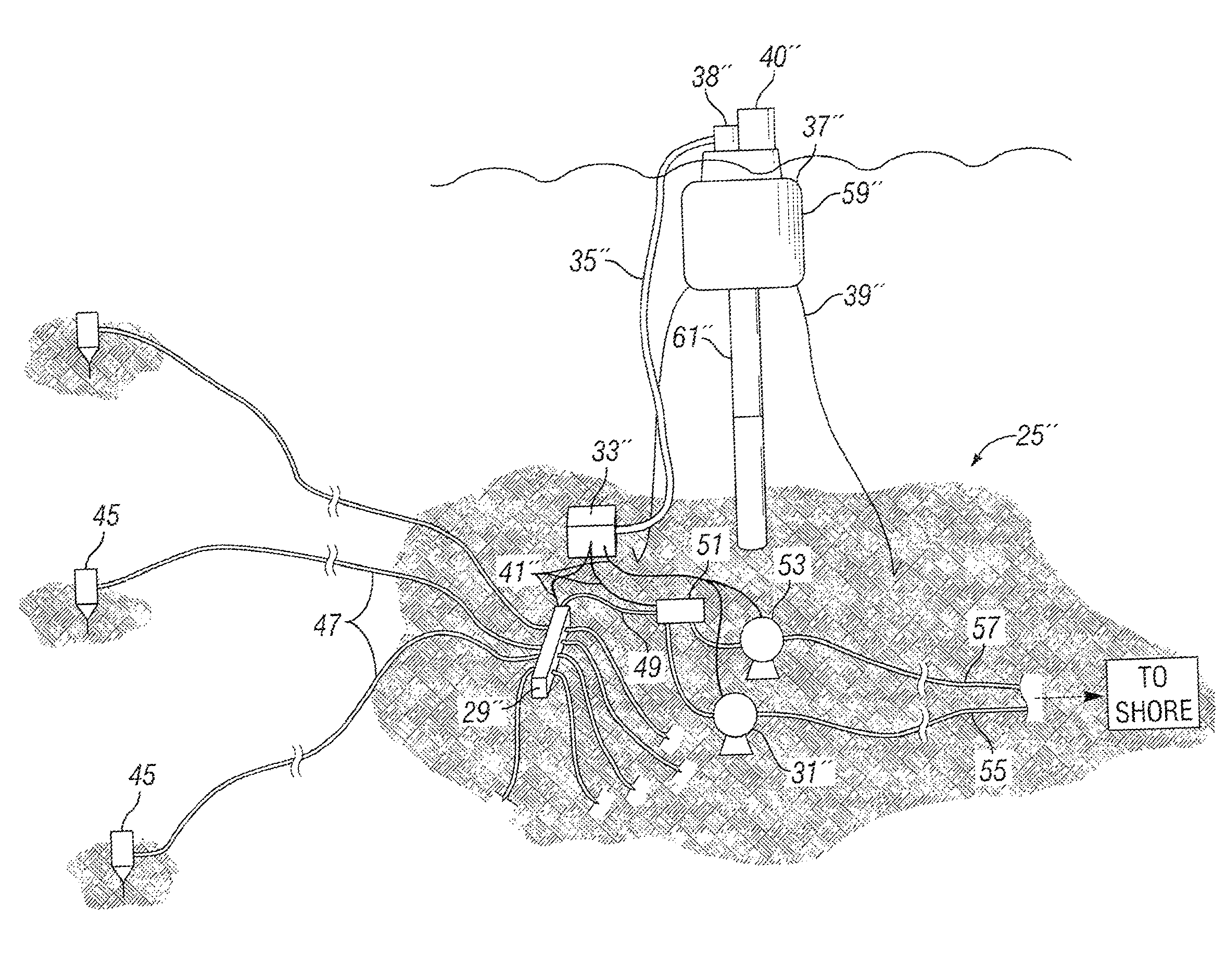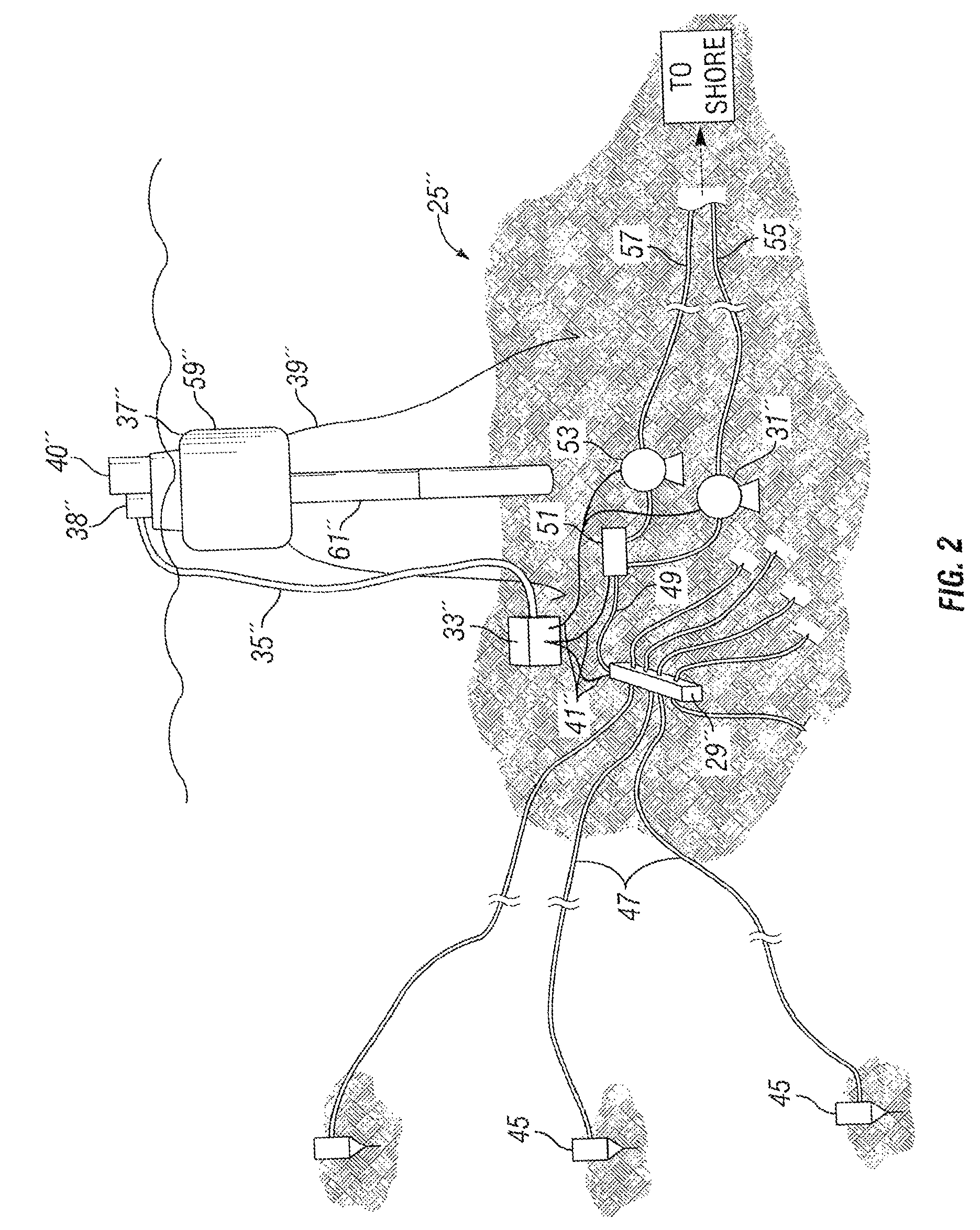Remote power-generating assembly
a technology of remote power generation and assembly, which is applied in the direction of electric generator control, special purpose vessels, fluid couplings, etc., can solve the problems of insufficient production volumes to economically justify the deployment of a dedicated host or stand-alone production facility, affecting the reliability and feasibility of exploiting remote reservoirs, and inability to transmit necessary power. technical and/or economically feasible, reduce space, weight, complexity and cost, and simplify the generation system eliminate the effect of maintenance requirements
- Summary
- Abstract
- Description
- Claims
- Application Information
AI Technical Summary
Benefits of technology
Problems solved by technology
Method used
Image
Examples
Embodiment Construction
[0073]Referring to FIG. 1, a production facility 11 is illustrated floating on sea surface 13 above a plurality of well heads 17, located on sea floor 15. While production facility 11 is illustrated in FIG. 1 as a floating platform those skilled in the art will readily appreciate that production facility 11 can alternatively be a floating production storage and uploading (FPFO) vessel, a gravity based structure, or other development-appropriate production facility rather than a floating platform.
[0074]A production riser 19 extends between production facility 11 for conveying hydrocarbons from well head 17 to production facility 11 as well for communications and power between production facility 11 and wellhead 17 on sea floor 15. In an embodiment shown in FIG. 1, there are plurality risers 19 extending up to production facility 11 from sea floor 15. One riser 19 extends upward from a pipeline end terminal (PLET) 21 located on seafloor 15, which is in fluid communication with a pipel...
PUM
 Login to View More
Login to View More Abstract
Description
Claims
Application Information
 Login to View More
Login to View More - R&D
- Intellectual Property
- Life Sciences
- Materials
- Tech Scout
- Unparalleled Data Quality
- Higher Quality Content
- 60% Fewer Hallucinations
Browse by: Latest US Patents, China's latest patents, Technical Efficacy Thesaurus, Application Domain, Technology Topic, Popular Technical Reports.
© 2025 PatSnap. All rights reserved.Legal|Privacy policy|Modern Slavery Act Transparency Statement|Sitemap|About US| Contact US: help@patsnap.com



